Siouxsie And The Banshees - Siouxsie and the Banshees
by Jon Rogers
published: 8 / 12 / 2014
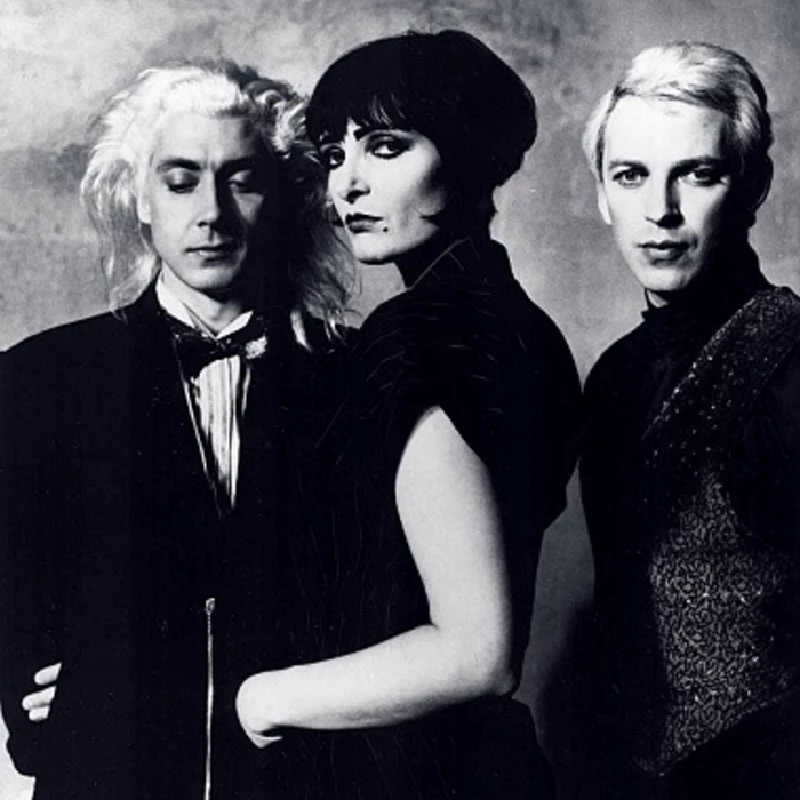
intro
Jon Rogers examines the latter years of Siouxsie and the Banshees, who have just reissued their final four albums, 'Through the Looking Glass', 'Peek-A-Boo', 'Superstition' and 'The Rapture'
After the long, laborious and tortuous recording of 'Tinderbox' in Berlin in 1985 and a lengthy tour in support of its release , Siouxsie and the Banshees were very much in need of some rest and recuperation and something of a pick-me-up tonic to revive themselves. The prospect of being on the typical album-tour-album treadmill certainly did not appeal, while the prospect of a covers album could be just the motivation to keep the band ticking over without piling on unnecessary pressure on having to come up with some new songs. And bashing out some old favourites could be a chance for the band to have some fun. Plus they already had a track record of doing some cracking covers in the form of the Beatles' 'Helter Skelter' and 'Dear Prudence'. Being fans of David Bowie, Siouxsie Sioux and company took the singer's 1973 album 'Pin Ups' album as their blueprint and went about selecting their own suitable songs to have a pop at. This proved to be no easy feat and caused a huge amount of disagreement amongst the three main group members - Siouxsie, Steve Severin and Budgie. Despite all three being big Bowie fans it was ruled that they would not cover one of his songs because it was "too close to home", although Severin campaigned hard to include 'After All' from 'The Man Who Sold the World'. Ultimately the final selection was something of an eclectic mix that included some predictable stabs of songs by the Doors, Television and John Cale, as well as some real curve balls in the form of 'Trust in Me' from the 1967 Disney film 'The Jungle Book' and 'Strange Fruit', made famous by Billie Holiday in 1939. A few eyebrows were raised at the stab at Bob Dylan's 'This Wheel's On Fire', from 'The Basement Tapes' recorded with The Band, as Siouxsie had in the past been quite vocal in expressing her sheer loathing of the 60’s iconoclast. In fact, so much so the song nearly did not make it to see the light of day. Fortunately it was and became a pre-album taster scoring the quartet a Top 20 hit in the UK. 'Through the Looking Glass' though while not quite marking artistic bankruptcy - and contemporary reviews were rather awkward to say the least - really was not all that far off and is rather disposable from the band's canon. It was, however, perhaps a necessary move. After all it gave the band some much needed breathing space after 'Tinderbox' and the chance to recharge their batteries. It is speculation but the band could very well have come a cropper had they hurtled headlong into recording another studio album of original material and missed out on the startling 'Peepshow' which would give them a second wind. 'Through the Looking Glass' though can really be skipped over. In the aftermath of the covers album, guitarist John Valentine Carruthers was given the boot to be replaced by Jon Klein, while also joining the ranks on a full-time basis was multi-instrumentalist Martin McCarrick who had previously worked on 'Through the Looking Glass'. It was the first time the Banshees had been a quintet. The period of rest and recuperation for the band had done them no end of good and spent the first six months of 1988 in a Sussex studio with Mike Hedges creating what would become one of their strongest albums in years. That return to form for their ninth studio album was, in part, no doubt down to Siouxsie and Severin returning to their old song writing habits - writing separately rather than as a pair and then bringing the group together once a basic framework had been constructed. Some songs had already, largely, been created, such as the lead single 'Peek-a-Boo' which had initially been considered as a B-side to their cover of Iggy Pop's 'The Passenger' but had been deemed too strong a track to throw away as a B-side. The song though had been around for around a year earlier than that though as Siouxsie had already written the lyrics and done the basic arrangement. It had been built up around a reversed loop of a brass part with drums added in and then other parts were layered on top to give the song a rather carnivalesque, unsettling feel to it, which certainly was not made any more easier with Siouxsie singing each line of the song through a different microphone effect. Despite the menace, the song also managed to also capture the sense of fun and wonder of the fairground. That sense of antagonistic duality seems to be at the heart of many of the band's best songs. The lead single also got the album underway to be followed by a host of songs that showed the band may have been punch drunk but were now fighting fit and ready to get back in the ring to go another round. 'The Killing Jar', the follow-up single released after the album had been released in September; the rather neglected 'Burn Up' and the closing 'Rhapsody' as well as the enchanting 'The Last Beat of my Heart' - which had originally been written as a Christmas song - indicated that the Banshees were far from a spent force. The critics and listening public seemed to agree too. The album made it to number 68 in the US chart with the single 'Peek-a-Boo' hitting number 16 in the UK. A very respectable showing for a decidedly alternative band that had come to prominence during punk. 'Melody Maker' got over-excited by 'Peek-A-Boo' calling it "quite the most astounding British record" of 1988, and "a brightly unexpected mixture of black steel and pop disturbance." The music weekly was also particularly taken with 'The Last Beat of Mmy Heart', stating: "the Banshees' most courageous arabesque in some time." The 'NME' while enthusiastic were not quite so gushing: ""Peepshow is the best Banshees record since 'A Kiss in the Dreamhouse' because it's the Banshees deciding to be a pop band rather than a rock group." Even the normally staid 'Q' worked up enough excitement to give the album the maximum five stars, saying: "'Peepshow' takes place in some distorted fairground of the mind where weird and wonderful shapes loom" and singled out 'Peek-a-Boo' for particular attention describing it as "a carny piece of musical imagination." For Siouxsie the album had been a crucial test. If the group could not deliver the goods, then perhaps it was time to realise that perhaps the band was not worth carrying on with. Fortunately any doubts had been comfortably squashed. Unfortunately they were unable to recapture that artistic achievement again. After a hiatus with Budgie and Siouxsie once again recording as the Creatures, the initial signs were highly encouraging once the band reconvened in December 1990 to begin recording what would become 'Superstition' with the slinky and seductive 'Kiss Them for Me'. The band's choice of producer was telling - Stephen Hague. While Hague had been at the controls for Pere Ubu's 'Cloudland' and New Order's hits 'True Faith' and 'Round and Round', he was famed for giving band's a commercial, pop sheen as with OMD and the Pet Shop Boys' 'Please'. It would seem he was hardly going to be sympathetic to the rather angular approach of the Banshees. Not only was the commercial ear of Hague perhaps at odds with the band, so were his working practices. While the band were hardly unfamiliar with modern computer technology in expressing their musical ideas, they essentially relied on the craft of their instruments. Hague, meanwhile, saw that as all outdated. Why bother with all that hard work when it could all be done by pressing a few buttons on a keyboard? Inevitably conflict broke out between Hague and the band, with Budgie particularly objecting to Hague's attempts to reorganise his drum sound. Siouxsie would tell 'Rock World' the following year: "There are still songs I like on it, like 'Kiss Them for Me' and 'Drifter', but we were trying a different kind of working style, a different kind of discipline, during which I really built a strong case against computers." The album's lead single 'Kiss Them for Me' was proof that the two sides could mix. The song title taken from a 1957 film, starring Cary Grant and Jane Mansfield, detailed the US actress' life in broad brushstrokes. Hague moulded the song into a seductive caress with a lightness of touch and smoothed out the band's rougher edges. Adding another dimension to the sound was the then unknown Talvin Singh, whose tabla playing fleshed out the record. The rest of the album was pretty forgettable, especially so after the passage of time. The production just sounds incredibly dated and really unsuited for the band that were more spit and sawdust than a chrome sheen. The production though is only half the problem. The songs just aren't there. Efforts like 'Cry', 'Silly Thing' and 'Silver Waterfalls' are mere filler, just wisps of songs. At the time though reviews were more favourable with 'Q' giving it four out of five stars while 'Melody Maker' went rather over the top dubbing it: "quite possibly the greatest album ever made." The buying public were not so convinced with the album only making it to number 25 in the UK charts when it was released in June 1991, the lowest chart position the band had achieved for an LP. 'Kiss Them for Me', however, had managed a respectable number 32 which must have given the band some encouragement. The band's overall fortunes may have been on the wane, but they were given a reviving shot in the arm when they were asked to compose a song for the upcoming 'Batman Returns' film, directed by Tim Burton. The surrounding interest in the 1992 film helped boost 'Face to Face' to a very respectable number 21 in the UK charts, the band's highest placing since 'Peek-a-Boo' four years previously. Given a new raison d'être, the band, despite ever-growing wider internal divisions, produced some rudimentary tracks with string arrangements before putting the project on ice to play a series of festival dates abroad. The former Velvet Underground multi-instrumentalist John Cale, who had built up a name for himself as a producer thanks to work on groundbreaking albums for Patti Smith and the Stooges, was brought in to give some shape and structure to the album and produce some of the remaining songs. But even Cale could not save the band's swan song from being more of a turkey. In part, the Banshees and Cale were a mismatched pairing that never really fitted together with Cale fiddling about too much with the songs, making them overly ornate when a more direct approach would have perhaps suited. But that is not to really blame Cale too much because he never really had that much solid ground to work on in the first place. In short, the songs just simply were not there and Cale could not magic something out of thin air. Added to that there were internal splits within the band that were growing ever wider. Siouxsie, Budgie and Severin formed the core of the group, while Klein and McCarrick were treated as little more than session musicians rather than integral band members which caused a degree of resentment from the pair. Had not the two of them served in the band long enough to be treated a little better than just the hired help? In reality it was the end of the line for a band that was effectively artistically bankrupt and not harmonious, and the resulting 'The Rapture' was anything but that. A scrappy, half-hearted affair that never caught fire at all. Even the lead single 'O Baby', released on 28 December 1994, was a light-weight pop song and not what the dedicated fans were used to and it limped into the charts at number 34. The follow- up single 'Stargazer' barely registered with the public, getting no higher than 64. The writing had been on the wall for some time and the disappointing album - both commercially and artistically - was enough for Polydor to drop the band from their roster. Reviews of the album though were, on the whole, pretty positive with 'Melody Maker' describing 'The Rapture' as "a fascinating, transcontinental journey through danger and exotica." While 'Vox' said: "The Rapture represents an intelligent twist on familiar Banshees obsessions." After one last tour the band called it a day in April 1996, some twenty years after the band had originally formed. Not too bad for a band that had initially come together to play one night at the 100 Club. Even while the band may have lost its way in the final years, it could still manage to enthral and enchant when it made the effort. These final four albums may not be the band's best but there is still enough there to keep even the average listener entertained. Admittedly the Banshees had become a very different beast from their early days as a punk band with Siouxsie deliberately being provocative by combining fetish wear with swastika armbands and going topless from time to time, but they had matured into a more professional outfit more interested in song writing than being consciously controversial merely for the sake of it.
Picture Gallery:-
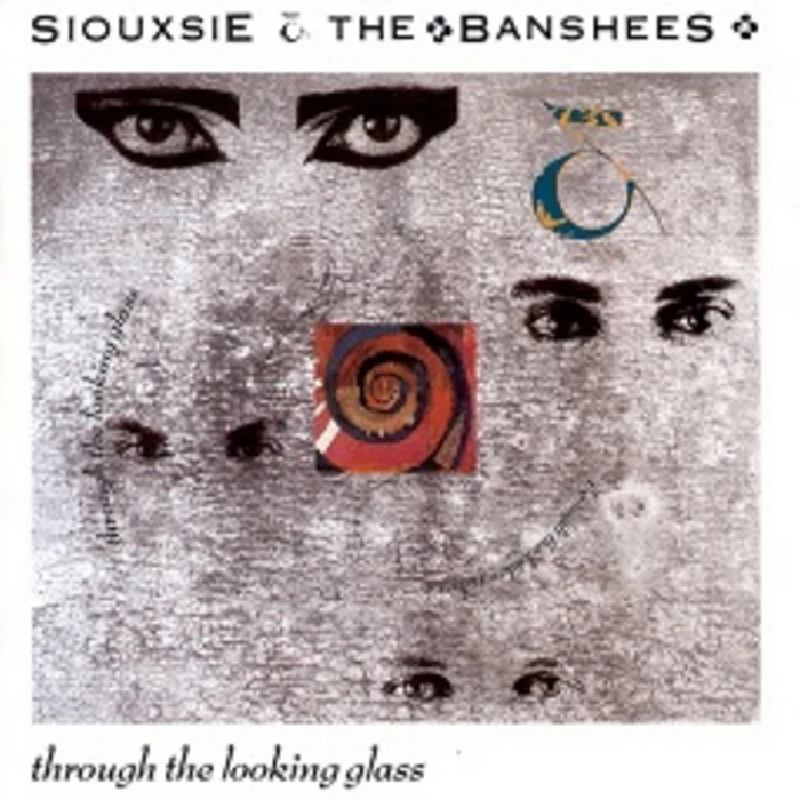
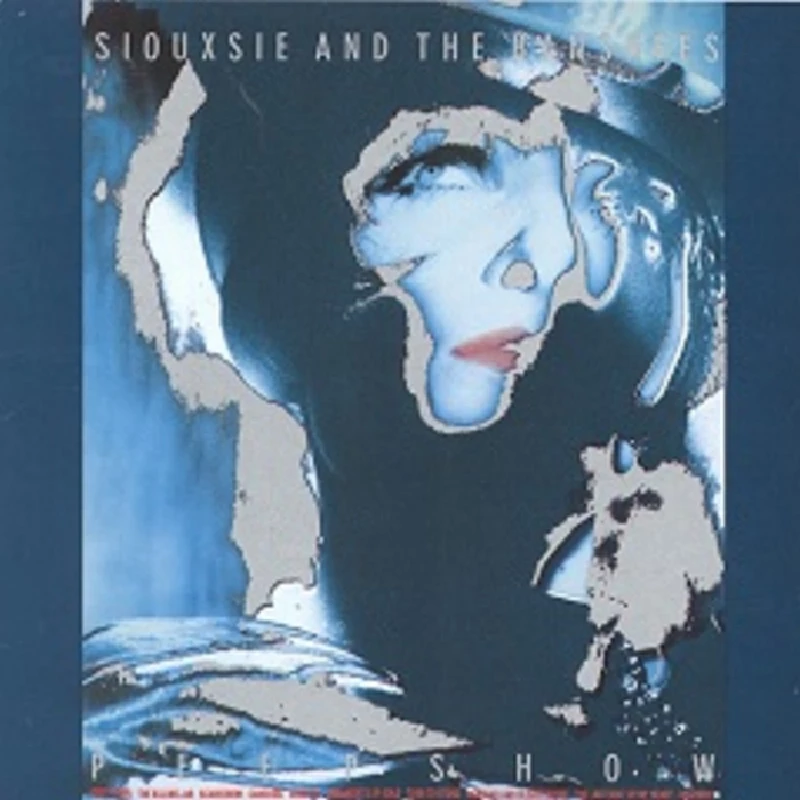
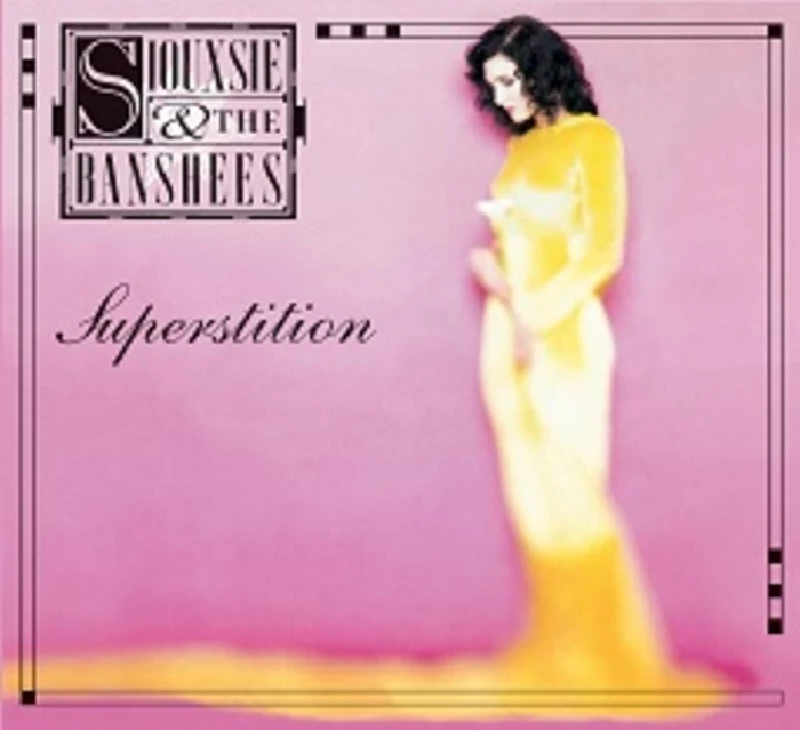
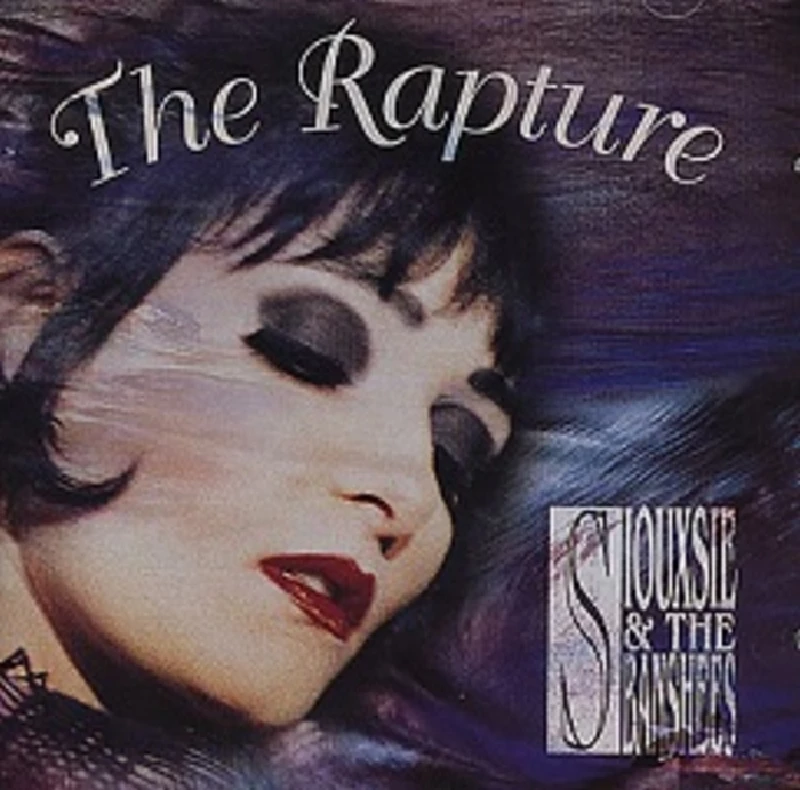
most viewed articles
current edition
Carl Ewens - David Bowie 1964 to 1982 On Track: Every Album, Every SongArmory Show - Interview with Richard Jobson
Colin Blunstone - Thalia Hall, Chicago, 16/7/2025
Bathers - Photoscapes 1
Visor Fest - Valencia, Spain, 26/9/2025...27/9/2025
John McKay - Interview
Editorial - July 2025
Sir Tim Rice - Interview
Bathers - Photoscapes 2
Billie Eilish - O2 Arena, London, 10/7/2025
previous editions
Heavenly - P.U.N.K. Girl EPManic Street Preachers - (Gig of a Lifetime) Millennium Stadium, Cardiff, December 1999
Oasis - Oasis, Earl's Court, London, 1995
Beautiful South - Ten Songs That Made Me Love...
Trudie Myerscough-Harris - Interview
Pixies - Ten Songs That Made Me Love...
Simon Heavisides - Destiny Stopped Screaming: The Life and Times of Adrian Borland
Paul Clerehugh - Interview
Doris Brendel - Interview
Prolapse - Interview
most viewed reviews
current edition
Amy Macdonald - Is This What You've Been Waiting For?Sick Man of Europe - The Sick Man of Europe
Phew, Erika Kobayashi,, Dieter Moebius - Radium Girls
Alice Cooper - The Revenge of Alice Cooper
Davey Woodward - Mumbo in the Jumbo
Lucy Spraggan - Other Sides of the Moon
Blueboy - 2
Cynthia Erivo - I Forgive You
Lapsley - I'm a Hurricane, I'm a Woman In Love
Philip Jeays - Victoria
Pennyblackmusic Regular Contributors
Adrian Janes
Amanda J. Window
Andrew Twambley
Anthony Dhanendran
Benjamin Howarth
Cila Warncke
Daniel Cressey
Darren Aston
Dastardly
Dave Goodwin
Denzil Watson
Dominic B. Simpson
Eoghan Lyng
Fiona Hutchings
Harry Sherriff
Helen Tipping
Jamie Rowland
John Clarkson
Julie Cruickshank
Kimberly Bright
Lisa Torem
Maarten Schiethart